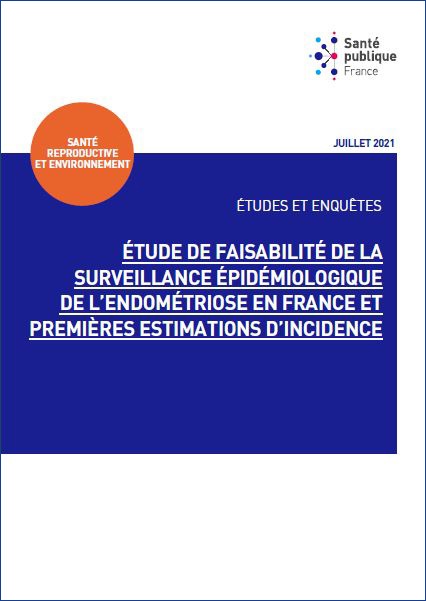
Public Health France has set up national epidemiological surveillance aimed at monitoring and analyzing reproductive health indicators possibly linked to exposure to endocrine disruptors (EDs). It is part of the national strategy on endocrine disruptors and uses existing health databases. Endometriosis was selected as one of the key indicators to monitor, based on the weight of evidence regarding the association with PE. This study examines the feasibility of monitoring endometriosis in France using data from the National Health Data System (SNDS), particularly for environmental health purposes. A multidisciplinary team bringing together specialist clinicians, epidemiologists, statisticians and scientists experienced in the use of SNDS databases has been set up in order to develop a strategy for identifying new cases of endometriosis. A literature review on the epidemiology of endometriosis and its possible links with exposure to EDs was conducted. We have constructed three indicators, reflecting hospital care for endometriosis, obtained according to three case selection algorithms within the Information Systems Medicalization Program (PMSI): The first is based solely on the selection of CIM- 10 for endometriosis (N80) as main, related or associated diagnosis; The second uses an approach supplementing the first algorithm with the codes of surgical acts resulting from a national census of the codes actually used in association with endometriosis, and which can lead to a histological diagnosis; The third, more specific, attempts to search for a selection of codes for surgical procedures proposed by the experts to identify certain specific forms of endometriosis, such as endometriotic cysts of the ovary, supposed to be coded in the most homogeneous way by clinicians. For each indicator, an incident case was defined as the first hospital stay without any occurrence of an endometriosis-coded stay in at least the previous 5 years. During the period 2006-2017, we identified at the level of the whole of France 30,600, 23,600 and 7,500 new cases per year, respectively with indicators 1 to 3, all ages combined. In order to compare our data with the literature, we estimated the gross annual incidence rate during the period 2011-2017, among women aged 10 to 49, for indicator 1: it is equal to 12.9/10 000, or of the same order of magnitude as in other countries using hospital data. The three indicators can be used to monitor hospital endometriosis at a national level, at a fine scale (postal code), in order to meet environmental health objectives: temporal, spatial, spatio-temporal monitoring, and exploration geographically determined environmental assumptions. The first indicator is the most sensitive to reflect hospital incidence of endometriosis, and the others can be used for sensitivity analyses. The limits of the proposed surveillance are the underestimation of the public health problem, since only cases of endometriosis treated in hospital are identified, and the possible influence of variations in treatment or coding on the temporal and spatial trends.
Author : Rigou Annabel, Chesneau Julie, Peyronnet Alexia, Balestier Anita, Le Moal Joëlle, Canis Michel, Daraï Émile, Fauconnier Arnaud, Kvaskoff Marina, Zacharopoulou Chrysoula
Year of publication: 2021
Pages: 36p.
Collection : Studies and surveys













